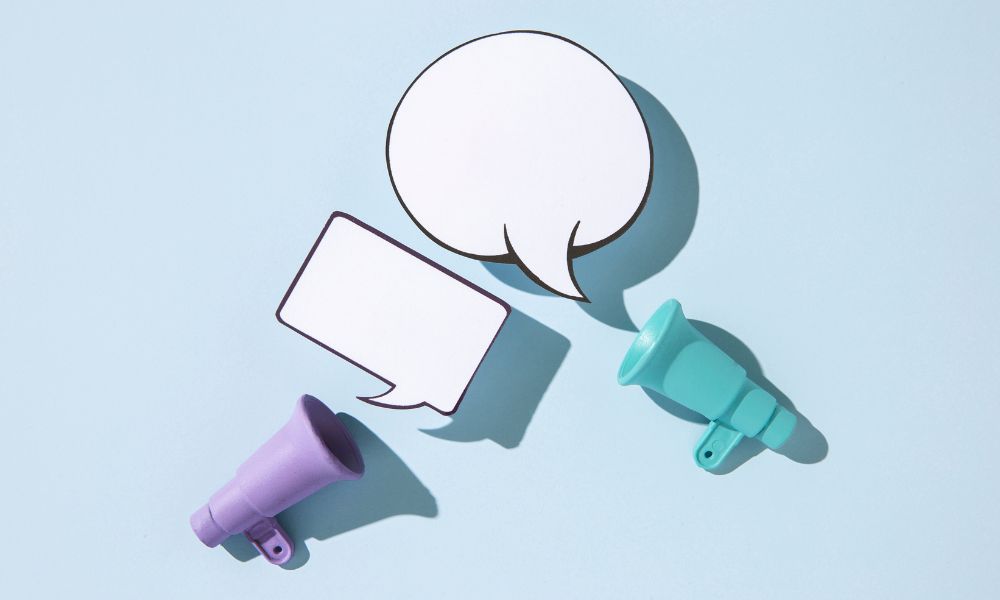Influencer whitelisting strategy is becoming increasingly popular because it combines the best of both worlds: influencer credibility and performance marketing precision. From boosting conversions to extending the life of influencer content, whitelisting is one of the most effective ways to scale results beyond organic reach.
More than just a paid boost, whitelisting unlocks full control over how influencer content is promoted, allowing brands to fine-tune targeting and track performance, while still leveraging the creator’s trusted presence. It also strengthens the brand-creator partnership by increasing visibility for both sides.
In this guide, you’ll learn how to build an effective influencer whitelisting strategy from start to finish. We’ll walk through platform-specific setup, what content works best, how to choose the right creators, and the common pitfalls to avoid.

What Is Influencer Whitelisting?
Influencer whitelisting is a process where a creator grants a brand permission to access their social media account for advertising purposes. This access allows the brand to run paid ads, using the influencer’s name, handle, and content, directly through the influencer’s profile rather than the brand’s own.
Unlike a standard sponsored post that lives only on the influencer’s feed, whitelisting gives brands control over targeting, copy, placement, and budget. It also opens the door to tactics like dark posting (ads that don’t appear on the influencer’s public profile) and A/B testing with different creative variations.
Whitelisting is most commonly used on platforms like Instagram, Facebook (via Meta Business Manager), TikTok, and increasingly on YouTube and Pinterest, where advertisers can tap into influencer-generated content and run it as high-performing native-looking ads.
At its core, influencer whitelisting is about turning creator content into scalable, performance-driven media, while keeping the authentic tone and social proof that influencers are known for.
How Influencer Whitelisting Works (Step-by-Step Guide)
Setting up influencer whitelisting involves a few technical steps, but once it’s in place, it gives brands powerful control over how creator content is amplified through paid media. Here’s how the process typically works, from permissions to ad launch.
Step 1 – Requesting Permissions (Meta, TikTok, YouTube)
The first step is getting access to the influencer’s ad permissions. This is done by having the creator grant you advertiser rights to their account or specific content.
- Meta (Facebook & Instagram): Use Meta Business Manager to send a partnership request. The influencer will need a Creator or Business account and must accept your request to allow ad access.
- TikTok: Use TikTok Creator Marketplace or TikTok Ads Manager. Influencers approve brand access to promote specific videos or give post-level ad authorization.
- YouTube: YouTube whitelisting is less common but can be done via BrandConnect or third-party platforms, where creators approve content licensing for promotion.
This step is all about establishing transparent permissions in a way that protects both parties, ideally supported by a signed agreement.
Step 2 – Setting Up Ad Accounts & Roles
Once permissions are granted, the brand adds the influencer’s account or content to its ad account.
- In Meta, the creator’s account is linked as a partner, allowing you to create ads using their handle and content.
- For TikTok, you’ll be able to access approved content under the “Spark Ads” section.
- For YouTube, you may use licensed content via Google Ads or third-party tools with permission.
Make sure account roles and access levels are clear: you’re promoting content, not taking over the influencer’s account.
Step 3 – Creating & Launching Whitelisted Ads
With access in place, the brand can now build and launch ads using the influencer’s handle or content.
- Boost organic posts or create custom dark posts (not visible on the creator’s feed)
- Control all ad variables, targeting, copy, budget, placements
- Use split testing (A/B) to test messaging and audience segments
These ads appear native in-feed from the influencer’s account, improving engagement and trust compared to traditional branded ads.
Platform Setup Tips: Facebook, TikTok, Pinterest & YouTube
Each platform has unique whitelisting requirements. Here are key tips:
- Facebook/Instagram (Meta): Use Meta Business Suite to manage partnerships and request content-level ad access. Influencers must have a Creator or Business profile.
- TikTok: Use Spark Ads and obtain post-level authorization. Be sure to use the correct ad code provided by the influencer.
- Pinterest: Partner content can be promoted via Idea Pins with creator permission. Use the “Paid Partnership” label to stay compliant.
- YouTube: Use BrandConnect or secure licensing to use creator content in Google Ads. Ensure you follow copyright policies and usage terms.

What Type of Influencers Should You Whitelist?
Not every creator is a good fit for whitelisting, and that’s a good thing. The most effective whitelisted ads come from influencers who not only match your brand voice but also perform well when their content is amplified through paid media.
💡Use an Influencer Discovery Tool to streamline the process of discovering the right creators to whitelist based on niche, audience, and engagement quality.
Here’s what to consider when choosing the right influencers to whitelist:
1. Micro vs. Macro Performance
Micro-influencers (typically 10K–100K followers) often drive higher engagement rates and more authentic interactions, making their content ideal for whitelisting. Macro-influencers and celebrities may offer broader reach, but their audiences can be less responsive to ad content. Whitelist micro-influencers when you want conversion-driven, cost-efficient results, and macro-influencers when the goal is top-of-funnel visibility.
2. Creators with High Engagement
Prioritize creators whose organic content consistently performs well. High likes, comments, saves, and shares are strong indicators that their content resonates with followers, meaning it’s more likely to convert when pushed through ads.
Key metrics to look at:
- Engagement rate (vs. follower count)
- Authentic audience interactions
- Quality of comments and conversation threads
3. UGC-Style Creators vs. Polished Aesthetics
Whitelisted content performs best when it looks and feels like organic posts, not traditional ads. That’s why creators with a UGC-style, natural lighting, real use cases, casual language, often outperform those with highly polished, commercial-looking feeds.
Still, for premium or luxury products, a more curated aesthetic may make sense. Match the creator’s content style to your brand category and campaign goals.
4. Trusted Long-Term Collaborators
Influencers you’ve worked with before (and had good results with) are ideal candidates for whitelisting. They understand your product, are familiar with your process, and are more likely to agree to access permissions. You’ve already built the trust, whitelisting simply adds scale to what’s already working.
Why Influencer Whitelisting Works (Benefits for Brands & Creators)
Influencer whitelisting is more than a media buying tactic, it’s a strategic way to amplify high-performing content while preserving the trust that creators have built with their audience. Done right, it delivers measurable value for both brands and influencers.
1. Boost ROI, Engagement, and Transparency
Whitelisted ads often outperform brand-run ads because they appear to come directly from a trusted creator, not a company. This increases click-through rates, lowers cost-per-acquisition, and drives stronger engagement across platforms.
Because brands control the targeting, copy, and optimization, they’re also able to track performance more accurately, bringing transparency to influencer campaigns that traditionally relied on limited data.
2. Extended Content Lifespan and Better Targeting
In a standard influencer campaign, content typically peaks within 24–48 hours of posting. Whitelisting allows brands to extend the reach and relevance of that content for weeks or even months by putting ad spend behind it.
With access to advanced targeting options, brands can:
- Reach custom and lookalike audiences
- Segment by interest, location, or demographics
- Retarget viewers with follow-up offers or product demos
This turns short-term posts into long-term growth drivers.
3. Creator Gains: Exposure, Credibility & Potential Revenue
Whitelisting isn’t just a win for brands, it benefits creators too. When their content is promoted via paid media:
- They reach new audiences they might not otherwise access
- Their authority grows as their posts appear more frequently in-feed
- Some brands offer additional compensation or ad revenue share for whitelisted usage
Plus, being featured in well-targeted ad campaigns can strengthen a creator’s brand value and open the door to future paid partnerships.

What Kind of Influencer Content Works Best for Whitelisting?
Not all influencer content is created equal, especially when it comes to whitelisting. The best-performing whitelisted ads don’t feel like ads at all. They look and sound like authentic posts from real people, which is exactly what drives higher engagement and trust. Here’s what works best:
- Organic-Looking, Native Content
Whitelisted ads perform better when they blend into a user’s feed. Content that feels natural, unscripted, and aligned with the creator’s usual style will generate more clicks and lower ad fatigue. Avoid overly branded, “salesy” visuals. Instead, focus on content that looks like something the influencer would post organically, even if it’s promoting your product.
- UGC-Style & Review-Based Videos Outperform Polished Promos
User-generated content and product reviews feel more relatable and trustworthy. Audiences are more likely to engage with someone who’s sharing their honest experience versus a polished ad with heavy branding.
That’s why the best whitelisted content often includes:
- “First impressions” or “Why I love this product” narratives
- Testimonials or before-and-after stories
- On-camera product demos or tutorials
Highly edited, commercial-style visuals may look great, but they often convert less because they lack that authentic, relatable feel.
- Videos > Stills (Especially on TikTok & Instagram)
Across platforms, short-form video content outperforms static imagery in whitelisted ads. This is especially true for Instagram Reels, Stories, and TikTok Spark Ads.
Video content gives you more room to:
- Show the product in action
- Highlight voice, emotion, and tone
- Build connection and storytelling in under 30 seconds
For best results, prioritize video-first creators when planning for whitelisting campaigns.
Best Practices for Influencer Whitelisting
Once you’ve mastered the technical setup, the real difference comes from how you approach influencer relationships, access, and campaign execution. Here are best practices to ensure your whitelisting efforts drive results without damaging trust.
I. Use Detailed Contracts Covering Access, Rights, and Usage. Before launching a whitelisted ad, always establish clear terms in writing. This includes:
- What access the brand will have (account-level or post-specific)
- How long content can be promoted
- Whether edits or variations are allowed
- Any compensation tied to paid promotion
This protects both parties and prevents misunderstandings around ownership, budgets, and brand safety.
II. Build Trust and Keep Creator Control Intact. Creators want to feel confident that their voice won’t be lost once the brand takes over ad distribution. Keep them informed on:
- How their content will be used
- What messaging or targeting will be applied
- Whether their profile or likeness will appear in multiple ad variants
Avoid micromanaging or altering their tone. Trust the creator’s style, it’s what made their content worth whitelisting in the first place.
III. Automate Access and Monitor Performance. Manual onboarding and asset collection doesn’t scale. Use tools or platforms to:
- Automate permission requests (e.g., Meta’s Partner Access or TikTok Spark Ads)
- Track campaign performance per creator
- Monitor ad fatigue or drop-off in engagement over time
The more data you have, the easier it is to optimize spend, replicate success, and manage multiple creator campaigns simultaneously.

What Can Go Wrong with Influencer Whitelisting – and How to Prevent It
Whitelisting gives brands powerful tools, but it also comes with technical, creative, and legal challenges that can derail even the most promising campaigns. Here are the most common friction points and how to stay ahead of them.
1. Complex Platform Permissions and Setup: Platforms like Meta and TikTok don’t always make it easy to request or grant ad access. Between Business Manager IDs, ad account roles, and Spark Ad codes, the setup process can be confusing for both brands and creators.
How to prevent it:
- Use clear, step-by-step onboarding instructions for creators
- Automate access where possible (e.g., via Leadsie, Meta’s Partner tools)
- Test your process internally before launching externally
2. Balancing Brand Control with Creator Authenticity: One of the biggest risks is over-editing or repurposing influencer content to the point where it no longer feels authentic. This breaks the trust that makes whitelisted ads effective in the first place.
How to prevent it:
- Set creative guardrails, not rigid scripts
- Let the influencer retain their voice and tone
- Always review content in its original form before launching as ads
3. Compliance Gaps and Reputation Risk: When running ads through a creator’s handle, your brand is more publicly tied to their actions, and vice versa. A lack of clarity around disclosure or contract terms can expose you to legal and PR risk.
How to prevent it:
- Use detailed agreements that cover ad usage, timelines, and content rights
- Make FTC disclosure (e.g., #ad, branded content tags) mandatory
- Monitor live ads to ensure compliance is maintained throughout the campaign
The good news? All of these issues are solvable with the right prep. Clear documentation, automation tools, and open communication will help you avoid these pitfalls while maximizing your whitelisting results.
Influencer Whitelisting vs. Dark Posting: When to Use Which?
Both influencer whitelisting and dark posting involve promoting content through paid ads, but they differ significantly in how they appear, who controls them, and when each strategy makes the most sense.
Here’s a breakdown to help you decide when to use each approach:
Influencer Whitelisting: Native Ads With Creator Trust
With whitelisting, the ad is published through the influencer’s handle and appears to come directly from them, even though it’s brand-controlled on the backend. This makes it feel more authentic, especially to users who trust the creator’s voice.
✅ Best for:
- Building trust and engagement
- Driving conversions from familiar, trusted sources
- Extending the reach of top-performing organic influencer posts
- Running content that feels organic but has paid support
⚙️ Brand controls: Targeting, budget, ad copy (in some cases), and placement
👀 Audience sees: The ad under the influencer’s name or profile
Dark Posting: Controlled Ads With Minimal Creator Visibility
Dark posts are paid ads that don’t appear on the influencer’s feed at all. They’re often created by the brand using influencer content, with or without attribution, and pushed to targeted audiences through the brand’s ad account.
✅ Best for:
- A/B testing variations of content
- Running ads without impacting the influencer’s personal feed
- Scaling top-performing content without overexposing it
⚙️ Brand controls: Everything, ad creative, targeting, placements
👀 Audience sees: An ad that looks native but isn’t visible on the influencer’s page
So, Which Should You Use?
| Factor | Whitelisting | Dark Posting |
| Trust | High — Comes from influencer handle | Moderate — Can appear more ad-like |
| Control | Shared — Influencer gives permissions | Full — Brand owns all ad details |
| Visibility | Visible on influencer’s profile | Invisible to followers |
| Use Case | High-trust conversion or retargeting | Large-scale testing or hidden promos |

Frequently Asked Questions (FAQs)
1. Can I whitelist an influencer without a contract?
Technically, yes – but it’s not recommended. Whitelisting involves permissions, ad spend, and public visibility, so a contract protects both parties. Your agreement should outline:
- What content can be used
- How long it can be promoted
- Compensation (if any)
- Rights, approvals, and usage terms
Even for short-term or test campaigns, having written terms is a smart safeguard.
2. Who controls the audience targeting in whitelisting ads?
The brand controls all targeting, budget, placement, and optimization. Once the influencer grants advertising permissions (usually through Meta Business Manager or TikTok Ads), the brand can:
- Define custom and lookalike audiences
- Choose geographic and demographic filters
- Set daily budgets and scheduling
- A/B test creative and messaging
The influencer has no control over who sees the ad once it’s whitelisted.
3. How much should influencers charge for whitelisting?
There’s no universal rate, but many influencers charge an additional 15–30% of their base rate for whitelisting rights, depending on:
- The duration of ad usage
- The platforms involved (Meta, TikTok, etc.)
- Whether it’s post-level or account-level access
- The size of the brand and scope of the campaign
Some may also negotiate flat fees, monthly access retainers, or tie-in bonuses if the campaign performs well. Always outline compensation clearly in your contract.
💡An influencer payment platform helps automate payouts, track bonus incentives, and ensure timely compensation for whitelisted content usage.
Final Thoughts: Is Influencer Whitelisting Right for Your Brand?
Influencer whitelisting isn’t just a trend, it’s a performance-driven strategy that combines the trust of creator content with the precision of paid media. By gaining controlled access to an influencer’s content and handle, brands can extend the life of top-performing posts, improve targeting, and scale campaigns with confidence.
That said, whitelisting works best when there’s mutual trust, clear agreements, and the right creative foundation. It’s not about taking over an influencer’s voice, it’s about amplifying it strategically.
If you’re already investing in influencer marketing and want more control, transparency, and ROI from your efforts, whitelisting is absolutely worth exploring. Start with creators you trust, use smart tools to manage access, and run campaigns that feel authentic while delivering results.
Before You Whitelist: Master These Influencer Marketing Essentials:
Whitelisting is a powerful tactic, but it works best when built on a solid foundation. Check out these related topics to make sure you’re covering every step before launching your whitelisting strategy:
- Nano Influencers vs Micro Influencers: Which Is Better for Your Brand?
Understand which type of creator fits your goals and budget. - Cost of Influencer Marketing: Pricing Breakdown, Trends & What to Expect
Learn how to forecast your influencer campaign budget, including whitelisting. - Influencer Marketing for Startups: Strategies, Costs & Tools
Build your influencer program from scratch with lean strategies that scale. - Influencer Brief: What It Is & How to Write One + 4 Templates
A strong brief leads to better content, essential before whitelisting. - Influencer Collaboration Platforms: Best Tools & Features
Discover the best platforms to streamline briefs, payments, and ad access. - Social Media Influencer Contract: How to Write, Key Terms & Template Guide
Set clear terms around usage rights, content approval, and paid promotion. - Influencer Onboarding: Best Practices, Checklists & Strategy
Make sure creators are aligned and ready before you start running ads.



